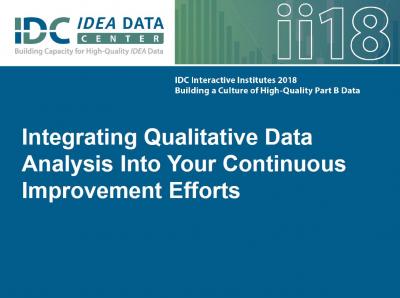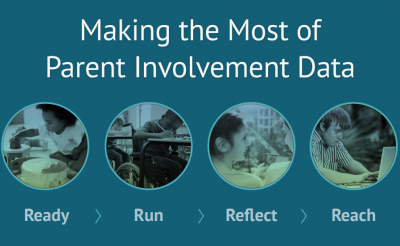Site Search
Results 1 - 4 of 4
Format: Presentations
The Interplay of Qualitative and Quantitative DataThis session provided a brief overview of various types of qualitative data collection methods. Presenters provided examples of different ways states can present qualitative data. They also discussed basic strategies for using qualitative and quantitative data together to support continuous improvement and evaluation efforts in states.
Format: Presentations
Integrating Qualitative Data Analysis Into Your Continuous Improvement EffortsWhen used together, qualitative and quantitative data provide strong evidence for change and can better inform continuous improvement efforts. This workshop focused on ways to conduct meaningful qualitative analysis and use it effectively with quantitative analysis. Participants had the opportunity to learn more about specific approaches to qualitative analysis and how to apply those approaches to an example dataset. Presenters then asked participants to think critically about how to use both qualitative and quantitative analysis to interpret and effectively present data.
Format: Toolkits
Making the Most of Parent Involvement Data: Improving Quality and Enhancing UnderstandingThis toolkit is designed to assist states as they plan for and carry out their efforts to collect, report, analyze, and use high-quality parent and family involvement data. It defines key concepts; offers guidance on ways to improve the quality of the collection, analysis, and use of parent and family involvement data; and provides resources and tools to help states in their efforts parent involvement data efforts.
Format: Guides and Briefs
Parent Involvement Data: How to Measure and Improve Representativeness for Indicator B8This interactive resource provides states with an overview on how to gather representative parent involvement data for Part B SPP/APR Indicator 8. The resource defines key concepts such as representativeness, sampling, nonresponse bias, response rates, and weighting. It also offers information on how to improve the quality of parent involvement data, including strategies that can help states collect representative data and evaluate and improve the representativeness of their data before, during, and after data collection.





